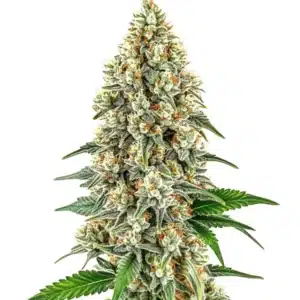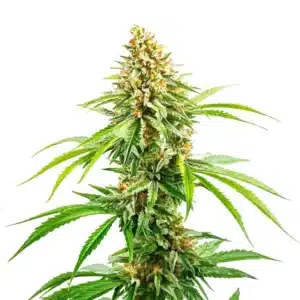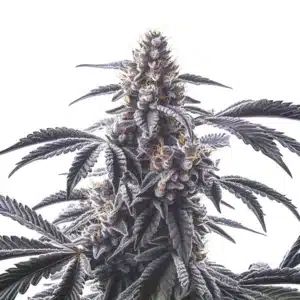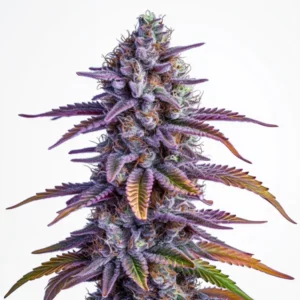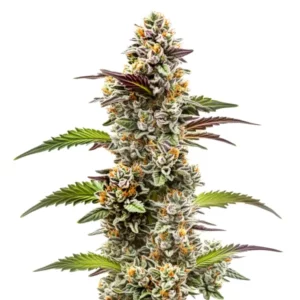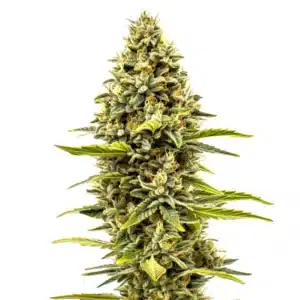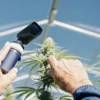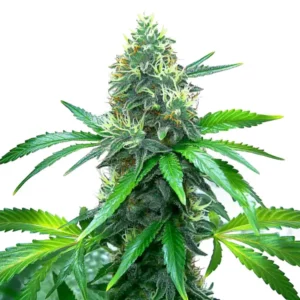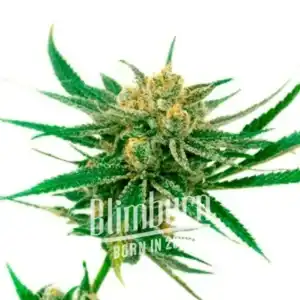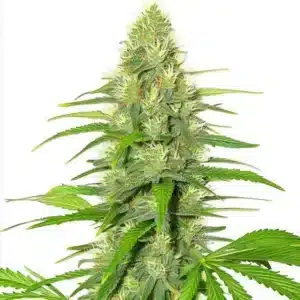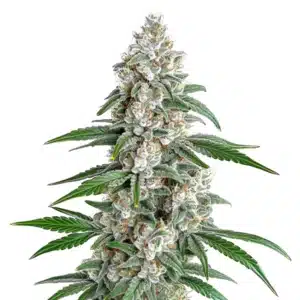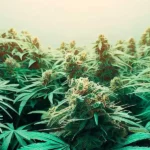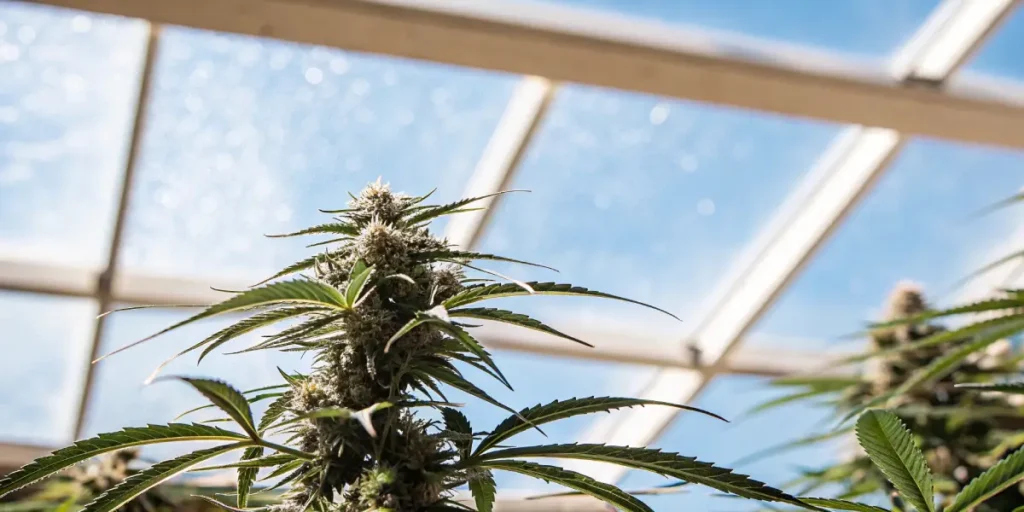
Gibberellins in Cannabis Explained
Gibberellins are plant hormones that play a critical role in different stages of a plant’s life. They are naturally occurring compounds that impact growth by stimulating cell elongation. When it comes to cannabis, gibberellins can significantly influence various growth aspects. Whether you are a first-time seed buyer or a seasoned grower, knowing how these hormones work can help you optimize your cannabis cultivation.
Gibberellins in cannabis explained, these hormones can affect the plant’s overall height, leaf size, and even flowering time. For instance, if you’re growing an outdoor strain like Fruit Spirit, gibberellins can help in achieving robust growth. By modifying the levels of gibberellins, growers can either speed up or slow down certain growth phases, allowing for more control over the final product.
Recommended Strains
Cinderella 99
|
|
THC | 13% - 17% (Medium) |
|
|
Type | Feminized |
|
|
Yield | High |
|
|
Phenotype | 20% Indica / 80% Sativa |
Cinderella 99 Fast Version
|
|
THC | 17% - 20% (Medium) |
|
|
Type | Fast Flowering |
|
|
Yield | Low |
|
|
Phenotype | 40% Indica / 60% Sativa |
While gibberellins role in cannabis growth is often beneficial, it’s crucial to use them wisely. Overuse can lead to plants that are too tall or have weak stems. Therefore, knowing the right balance is key to maximizing the potential of your cannabis plants. For example, indoor growers might use gibberellins to manage plant height, ensuring that their setup accommodates the plants’ growth.
How Gibberellins Affect Cannabis Plants
The influence of gibberellins on cannabis plants is profound. These hormones can dictate how well your plants absorb nutrients and how efficiently they can convert light into energy. This is particularly important for strains like Blue Dream, which are known for their vigorous growth and high yields.
By manipulating gibberellins levels, growers can optimize the plant’s metabolism. This results in enhanced growth rates and improved overall health. However, it’s essential to monitor these levels closely. Too much gibberellin can lead to elongated stems and reduced leaf mass, which might not be ideal for every growing environment.
Gibberellins in cannabis explained further emphasize the importance of knowing how gibberellins affect cannabis plants. These hormones are integral to the process of internodal spacing, which can influence light penetration and air circulation within the canopy. Proper spacing ensures that lower branches receive adequate light, promoting uniform growth and potentially increasing the plant’s overall productivity.
Furthermore, knowing gibberellins in cannabis production involves recognizing their impact on the plant’s stress response mechanisms. Gibberellins can play a role in helping cannabis plants recover from environmental stressors such as drought or temperature fluctuations. By enhancing the plant’s resilience, growers can maintain healthier crops, resulting in more consistent yields.
Promos & Deals
Gibberellins Use in Cannabis Cultivation
Incorporating gibberellins into your cannabis cultivation strategy can be a game-changer. These hormones are often applied during the vegetative stage to promote rapid growth. This is particularly beneficial for strains that require a lot of space, like the popular OG Kush. By accelerating growth, you can achieve larger plants in a shorter timeframe.
However, the application of gibberellins should be carefully timed. For instance, using them during the flowering stage might not yield the desired results. It’s always best to experiment with small doses and gradually increase based on the plant’s response. This cautious approach helps in maximizing the gibberellins impact on cannabis yield without compromising quality.
Gibberellins use in cannabis cultivation also involves knowing the interactions with other plant hormones. For example, balancing gibberellins with auxins and cytokinins can create a more harmonious growth environment, leading to healthier plants. This synergy is crucial for growers aiming to optimize their cultivation practices and achieve the best possible outcomes.
Moreover, gibberellins role in cannabis growth extends to seed germination. By applying gibberellins to seeds, growers can enhance germination rates and promote more uniform seedling development. This can be particularly advantageous for commercial growers who need consistent results across large batches of plants, ensuring that each plant reaches its full potential.
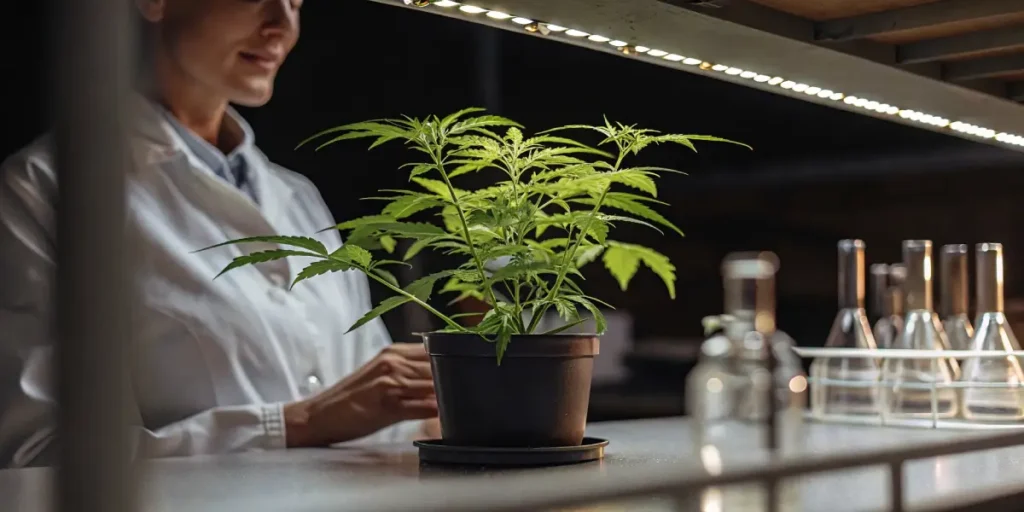
Practical Application of Gibberellins
Implementing gibberellins in your cannabis cultivation doesn’t require extensive expertise. Even beginners can use these hormones effectively with a bit of research. Start by identifying the growth stage of your plants and decide if gibberellins would be beneficial at that point. For example, during the early vegetative stage, a light application can help kickstart growth.
Many experienced growers use gibberellins to tackle specific challenges. If your plants are not growing as expected, a small dose could stimulate growth and improve their vigor. Conversely, if your plants are becoming too tall, reducing gibberellins can help maintain a manageable height.
For those new to the concept, knowing gibberellins in cannabis production can initially seem daunting, but practical application is often straightforward. Start by measuring precise doses of gibberellins and observe how your plants respond over a controlled period. This methodical approach allows you to fine-tune your applications based on real-world results, minimizing the risk of over-application.
Another practical tip for gibberellins use in cannabis cultivation is to integrate them with regular plant care routines. By combining gibberellins application with proper pruning techniques, growers can shape the plant structure to enhance light exposure and airflow, further boosting the plant’s health and productivity. This holistic approach ensures that gibberellins are just one part of a comprehensive cultivation strategy.
FAQs
What are gibberellins?
Gibberellins are a group of plant hormones that influence growth and development. In cannabis, they play a crucial role in various growth stages, affecting aspects like height, leaf size, and flowering time. They are naturally present in plants but can also be supplemented to achieve specific growth outcomes.
These hormones are particularly useful for growers looking to optimize their yields and enhance plant health. By adjusting gibberellins levels, growers can control growth patterns, making it easier to manage the plant’s size and vigor. Gibberellins in cannabis explained, they are a powerful tool in the grower’s arsenal.
Knowing the fundamental question of “What are gibberellins?” involves recognizing their biochemical nature. Gibberellins are diterpenoid acids, which are synthesized in the plastids of plant cells. This chemical composition allows them to play a pivotal role in regulating various physiological processes essential for plant growth and development.
Furthermore, gibberellins role in cannabis growth is not limited to just one aspect. They are involved in seed germination, stem elongation, and even the transition from vegetative to flowering stages. Their multifunctional nature makes them indispensable for growers aiming for precise control over their cultivation processes.
How do gibberellins influence cannabis yield?
Gibberellins impact on cannabis yield is significant. By promoting cell elongation and division, these hormones can lead to larger plants with more biomass. This, in turn, can result in higher yields when managed correctly. However, it’s essential to balance gibberellins levels to avoid overly tall plants with weak structures.
For example, if you’re growing a high-yield strain like OG Kush, managing gibberellins effectively can help you maximize your harvest. It’s all about finding the right balance to ensure that plants grow strong and healthy without sacrificing quality. Consistent monitoring and adjustments are key to achieving the best results.
Gibberellins in cannabis explained further suggest that their influence goes beyond mere plant size. By enhancing the plant’s ability to uptake nutrients efficiently, gibberellins can improve overall plant health, which directly contributes to yield quality. Healthier plants are more capable of producing dense, resin-rich buds that are highly sought after.
Additionally, knowing gibberellins in cannabis production enables growers to strategically time their applications for maximum impact. For instance, applying gibberellins during the vegetative phase can set the foundation for robust flowering, ensuring that plants have the energy reserves needed for substantial bud production during the flowering stage.
Are there risks associated with using gibberellins?
While gibberellins offer many benefits, there are risks if not used correctly. Overuse can lead to plants that are too tall, with elongated stems that may struggle to support the plant’s weight. This is particularly problematic in indoor setups where space is limited. It’s crucial to start with small doses and adjust gradually.
Moreover, using gibberellins during inappropriate growth stages can result in undesired effects. For instance, applying them during the flowering stage might lead to reduced flower density. Growers should carefully plan their gibberellins use to align with their cultivation goals and the specific needs of their chosen cannabis strains.
Knowing the risks associated with gibberellins use in cannabis cultivation is essential for avoiding potential pitfalls. One of the primary concerns is the possibility of hormonal imbalances if gibberellins are not properly calibrated with other growth regulators. Such imbalances can lead to erratic growth patterns that are difficult to manage.
Furthermore, the potential for reduced structural integrity in plants subjected to excessive gibberellins cannot be overlooked. Growers must remain vigilant and responsive to the plants’ needs, employing corrective measures such as staking or trellising to support plants that have grown too tall or lack adequate stem strength.
Can gibberellins be used with all cannabis strains?
Gibberellins can be used with most cannabis strains, but it’s essential to consider the specific characteristics of each strain. Some strains, like Blue Dream, may respond well to gibberellins due to their vigorous growth nature. Others might require more cautious application to avoid excessive stretching.
Ultimately, the key is to experiment and observe how each strain reacts. Detailed record-keeping of your gibberellins use and results can guide future applications. By tailoring gibberellins levels to each strain, growers can optimize growth and yield, achieving the best possible outcomes.
The versatility of gibberellins in cannabis explained means that while they are broadly applicable, their effectiveness can vary based on genetic factors. Indica-dominant strains, for instance, might not require as much gibberellin intervention due to their naturally compact growth habits, whereas sativa-dominant strains might benefit more from carefully managed applications.
Moreover, knowing gibberellins in cannabis production includes recognizing the potential for strain-specific side effects. Some strains may exhibit heightened sensitivity, reacting unpredictably to gibberellins. This makes it crucial for growers to conduct small-scale trials before committing to large-scale applications, ensuring that they find the optimal approach for each unique genetic profile.
Where can I find more information on cannabis strains and gibberellins?
For more information on cannabis strains and their compatibility with gibberellins, visiting specialized seed banks like Blimburn Seeds can be valuable. They offer a wide range of strains with detailed descriptions, helping you choose the best options for your cultivation goals.
Additionally, forums and grower communities can provide insights into real-world experiences with gibberellins. Learning from fellow growers can offer practical tips and tricks for using gibberellins effectively. Always stay informed and ready to adapt your strategy as you gain more experience.
Engaging with online resources can further enhance your knowing of gibberellins role in cannabis growth. Websites dedicated to cannabis cultivation often have articles and guides on the specific use of plant hormones, including gibberellins, providing a wealth of information for both novice and experienced growers.
Moreover, attending horticultural workshops or seminars can offer hands-on learning experiences. These events often feature industry experts who can offer advice on how gibberellins affect cannabis plants and share the latest research findings, helping you stay ahead of trends and innovations in cannabis cultivation.


